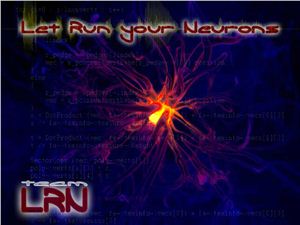Издательство A K Peters, 2001, -196 pp.
Making realistic images using a computer is now commonplace. As a result, directors can create convincing, imaginary worlds; and designer can virtually prototype, visualize, end evaluate potential products and spaces. Although not that long ago it was easy for anyone to distinguish computer-generated images from photographs, nowadays even experts are easily fooled. It is hard to separate rea1 from the virtual in a movie or magazine these days.
However, creating algorithms and building systems to produce such images is a challenging task. Fundamentally it involves understanding the physics - how light interacts with the materials in the world - and the psychophysics how we perceive the light rays entering our eye. Artists and scientists throughout the ages have studied the causes of appearance and the resulting visual cues: motion, shape. occlusion, perspective, lighting, reflection, texture, and color. All these generators of appearance may now be modeled on a computer. We can model and simulate the processes that form pattes and textures, the physics of light reflecting from a surface or scattering in a media, and the propagation of light as it travels from light sources through the scene to the camera.
The two breakthrough algorithms in image synthesis were ray tracing and radiosity. Ray tracing involves first casting rays from the eye through a pixel and into the scene, recursively generating reflected and refracted rays. Stochastic or distributed ray tracing was invented to deal with motion blur, depth or field or reflections from glossy surfaces, and path tracing extended the algorithm to deal with mutual interreflection. Radiosity takes a different approach: it assumes the world consists of diffuse surface patches, and then solves a matrix equation for the amount of light reaching each path.
Introduction
Fundamentals of Global Illumination
Monte Carlo Ray Tracing
The Photon-Mapping Concept
Photon Tracing
The Photon Map Data Structure
The Radiance Estimate
Visualizing the Photon Map
A Practical Two-Pass Algorithm
Participating Media
Optimization Strategies
A Basic Monte Carlo Integration
B A Photon Map Implementation in C++
C A Cognac Glass Model
Making realistic images using a computer is now commonplace. As a result, directors can create convincing, imaginary worlds; and designer can virtually prototype, visualize, end evaluate potential products and spaces. Although not that long ago it was easy for anyone to distinguish computer-generated images from photographs, nowadays even experts are easily fooled. It is hard to separate rea1 from the virtual in a movie or magazine these days.
However, creating algorithms and building systems to produce such images is a challenging task. Fundamentally it involves understanding the physics - how light interacts with the materials in the world - and the psychophysics how we perceive the light rays entering our eye. Artists and scientists throughout the ages have studied the causes of appearance and the resulting visual cues: motion, shape. occlusion, perspective, lighting, reflection, texture, and color. All these generators of appearance may now be modeled on a computer. We can model and simulate the processes that form pattes and textures, the physics of light reflecting from a surface or scattering in a media, and the propagation of light as it travels from light sources through the scene to the camera.
The two breakthrough algorithms in image synthesis were ray tracing and radiosity. Ray tracing involves first casting rays from the eye through a pixel and into the scene, recursively generating reflected and refracted rays. Stochastic or distributed ray tracing was invented to deal with motion blur, depth or field or reflections from glossy surfaces, and path tracing extended the algorithm to deal with mutual interreflection. Radiosity takes a different approach: it assumes the world consists of diffuse surface patches, and then solves a matrix equation for the amount of light reaching each path.
Introduction
Fundamentals of Global Illumination
Monte Carlo Ray Tracing
The Photon-Mapping Concept
Photon Tracing
The Photon Map Data Structure
The Radiance Estimate
Visualizing the Photon Map
A Practical Two-Pass Algorithm
Participating Media
Optimization Strategies
A Basic Monte Carlo Integration
B A Photon Map Implementation in C++
C A Cognac Glass Model

